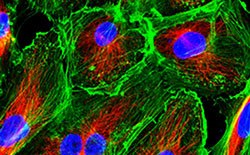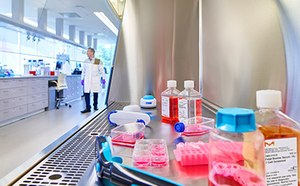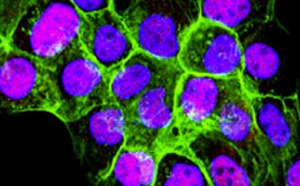Primary Cell Culture Techniques

An Overview of Primary Cells
Primary cells are mammalian cells that are harvested directly from living human or animal tissues. They differ from stem cells in that non-stem primary cells are typically terminally differentiated and are therefore considered closely representative of the tissues from which they are isolated, particularly where characteristics of cancer biology may make cancer cell lines less predictive models of normal systems or noncancer pathologies. Common primary cell phenotypes include epithelial, endothelial, keratinocytes, melanocytes, fibroblasts, osteoblasts, myocytes, and hepatocytes.
Featured Categories
Choose from a range of optimized cell culture media formulations, including DMEM, RPMI-1640, and serum-free options for diverse cellular needs.
Rich in growth-promoting factors, Fetal bovine serum (FBS) or fetal calf serum (FCS) is an...
Milli-Q® systems offer innovative water purification technologies engineered to...
We offer authenticated, contaminant-free cell lines, many in partnership with ECACC; critical tools for protein, antibody, virus, and vaccine production.
How Primary Cells Differ from Immortalized Cell Lines
Like cell lines derived from tumors or immortalized by other methods, primary cells from human or animal sources provide a method for modeling biological systems. Because they are typically viable for fewer doublings, primary cells are less susceptible to the loss of tissue-specific traits that can characterize cells cultured over long periods of time and repeated passages in vitro. Primary cells may be documented with donor characteristics, including age, gender, and disease state where applicable, and may therefore prove useful models for the development of personalized medicine approaches.
Sourcing and culturing primary cells
Research institutions associated with hospitals may have access to primary tissues and cells. Primary cell suppliers offer cell lots from individual donors or cells pooled from multiple donors. Reputable suppliers or patient collection protocols should include documentation demonstrating ethical oversight for the isolation of cells from human donors, as well as validation of cell type. Primary cells differ from mammalian cell lines in that they are generally more fastidious, requiring extra nutrients, particularly when cultured in media that is low in serum or serum-free. These additional, defined nutrients include cytokines and growth factors.
Visit our document search for data sheets, certificates and technical documentation.
Related Articles
- Overview of primary cells and media usage in biomedical culture applications highlights differences from cell lines.
- Primary human fibroblasts and growth medium for the in vitro cultivation of juvenile and adult fibroblasts. Protocols for handling, cell passaging, media, and product use.
- The PromoCell Primary Cancer Culture System allows selective isolation of malignant cancer cells from tumor associated stromal cells in patient derived xenographs (PDX models) and tumor samples.
- Optimize primary human airway epithelial cell culture with serum-free media and handling protocols for large air passage cells.
- ADCC assay performance and reproducibility using ready-to-use, cryopreserved NK effector cells, A549 target cells expressing a luciferase reporter gene, and anti-EGFR antibody.
- See All (24)
Related Protocols
- Human Umbilical Vein Endothelial Cells (HUVEC) Culture Protocol. Storage. Preparation for Culturing. Store the cryovials in a liquid nitrogen storage tank immediately upon arrival.
- Ficoll 400® is a non-ionic polymer with high hydrophilicity and water solubility, suitable for various biological applications.
- Generate phagocytic M1 and M2 macrophages from human PBMCs in 10 days in serum-free and xeno-free cell culture media. Explore over 350 PromoCell products.
- Osteogenesis, adipogenesis and chondrogenesis differentiation protocols and media for human mesenchymal stem cell culture. Explore over 350 PromoCell products on our company website.
- Store the cryovials in a liquid nitrogen storage tank immediately upon arrival.
- See All (40)
Find More Articles and Protocols
How Can We Help
In case of any questions, please submit a customer support request
or talk to our customer service team:
Email custserv@sial.com
or call +1 (800) 244-1173
Additional Support
- Chromatogram Search
Use the Chromatogram Search to identify unknown compounds in your sample.
- Calculators & Apps
Web Toolbox - science research tools and resources for analytical chemistry, life science, chemical synthesis and materials science.
- Customer Support Request
Customer support including help with orders, products, accounts, and website technical issues.
- FAQ
Explore our Frequently Asked Questions for answers to commonly asked questions about our products and services.
To continue reading please sign in or create an account.
Don't Have An Account?



